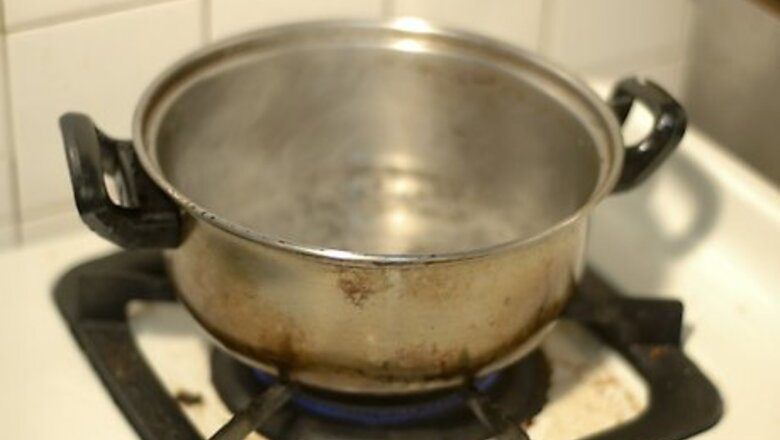
views
Heat some water.
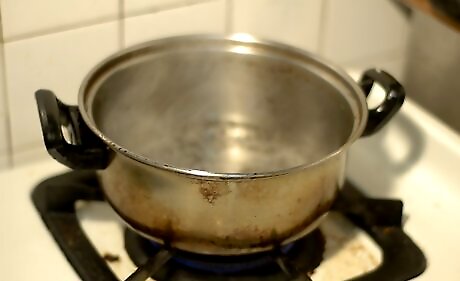
Use a double boiler and heat until it’s a quarter full. If you don't have a double boiler, you can use a large saucepan with water in it, and place a smaller metal pot or bowl inside the saucepan. Heat the water over medium heat.
Prepare the paraffin.
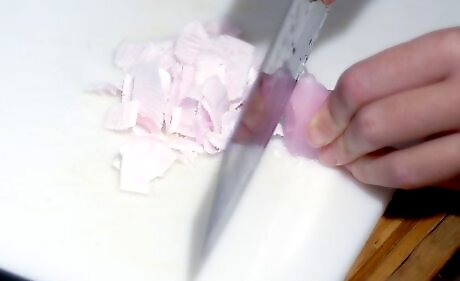
You will use paraffin to preserve the flowers. With a sharp knife, cut the paraffin into pieces of approximately 1 inch by 1 inch (2.5 cm by 2.5 cm).
Melt the paraffin.
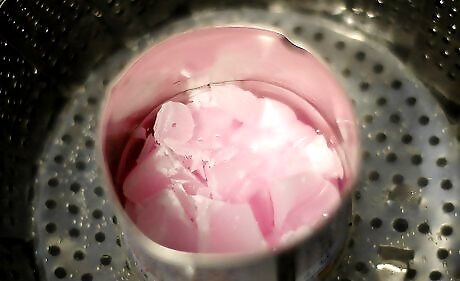
Put the paraffin into the double boiler and let it simmer. Stir it constantly so it melts evenly and to prevent lumps or clots from forming. If you're using a saucepan and a pot or bowl, put the paraffin wax inside the smaller pot or bowl. When all of the paraffin is melted, turn the heat down to low.
Prep the flowers.

Strip any wilted or dead petals or leaves from the flowers. Dead leaves or petals will look unsightly, while wilted ones most likely will not survive the waxing process. Tie a piece of string of about 3 inches (7.5 cm) of the each flower's stem.
Dip the flowers in the wax.
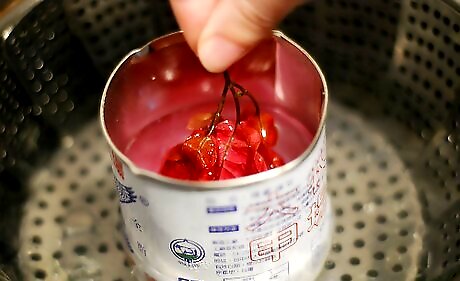
Holding a flower by its stem, dip it into the melted wax. until it is completely and evenly coated. Don't worry about coating the stem yet, that will be done in a later step. Use the piece of string to tie the flower to a clothes rack (or something else from which you can hang it). To catch any drips from the wax, place a sheet of wax paper or newspaper beneath the flowers. Repeat this process for all of the flowers.
Flip the flower and dip the stem.
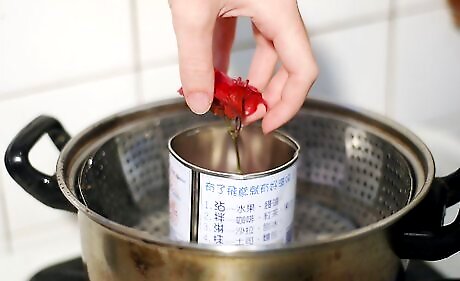
Once the upper portion of the flower dries, dip the stem. When all of the flowers are dry, carefully remove one from where it is hanging. Untie the piece of string from the stem. Dip the flower stem into the wax. Swirl it around until it is completely covered. Lay the flower on a piece of wax paper on a baking sheet to dry. Repeat this process for all of the flowers.

















Comments
0 comment